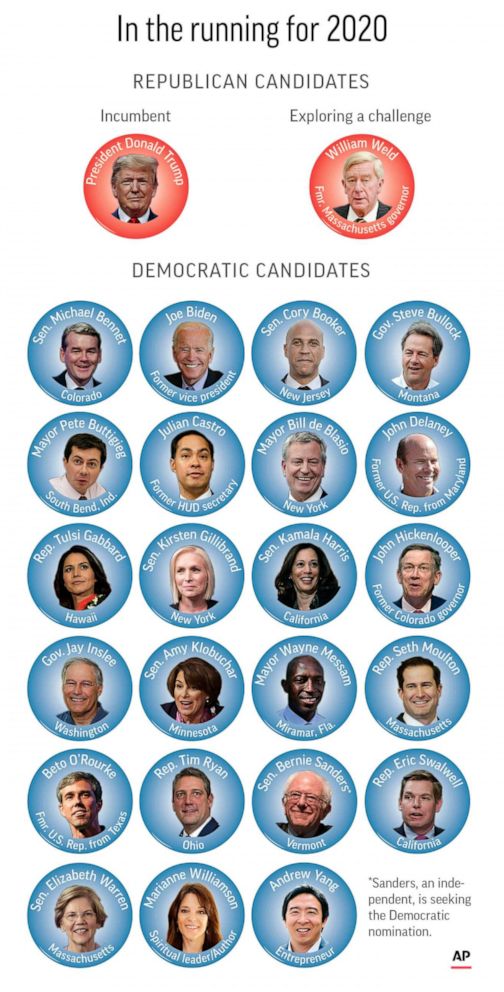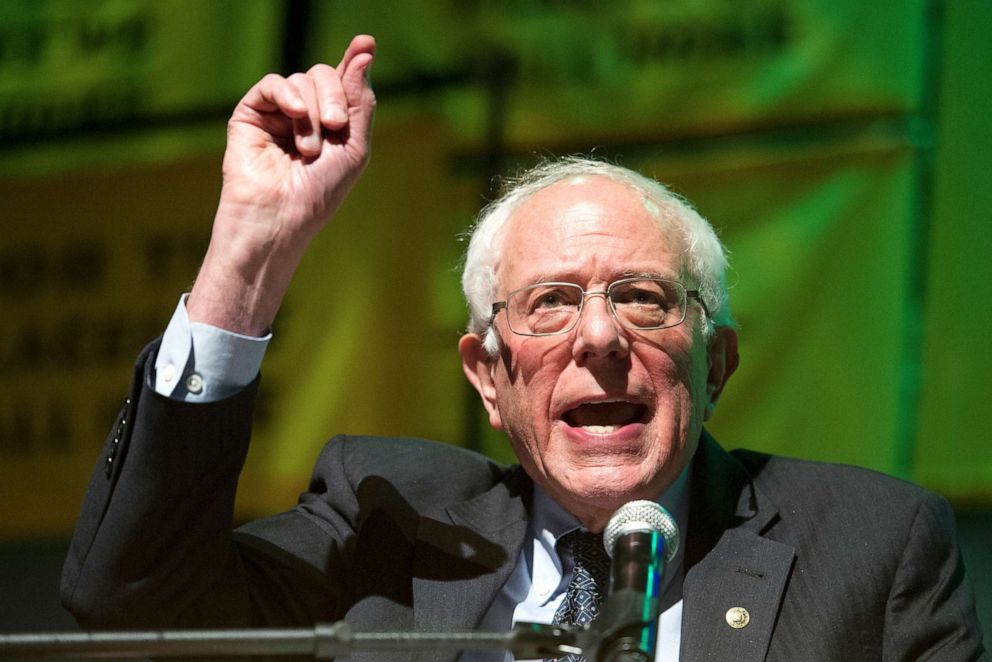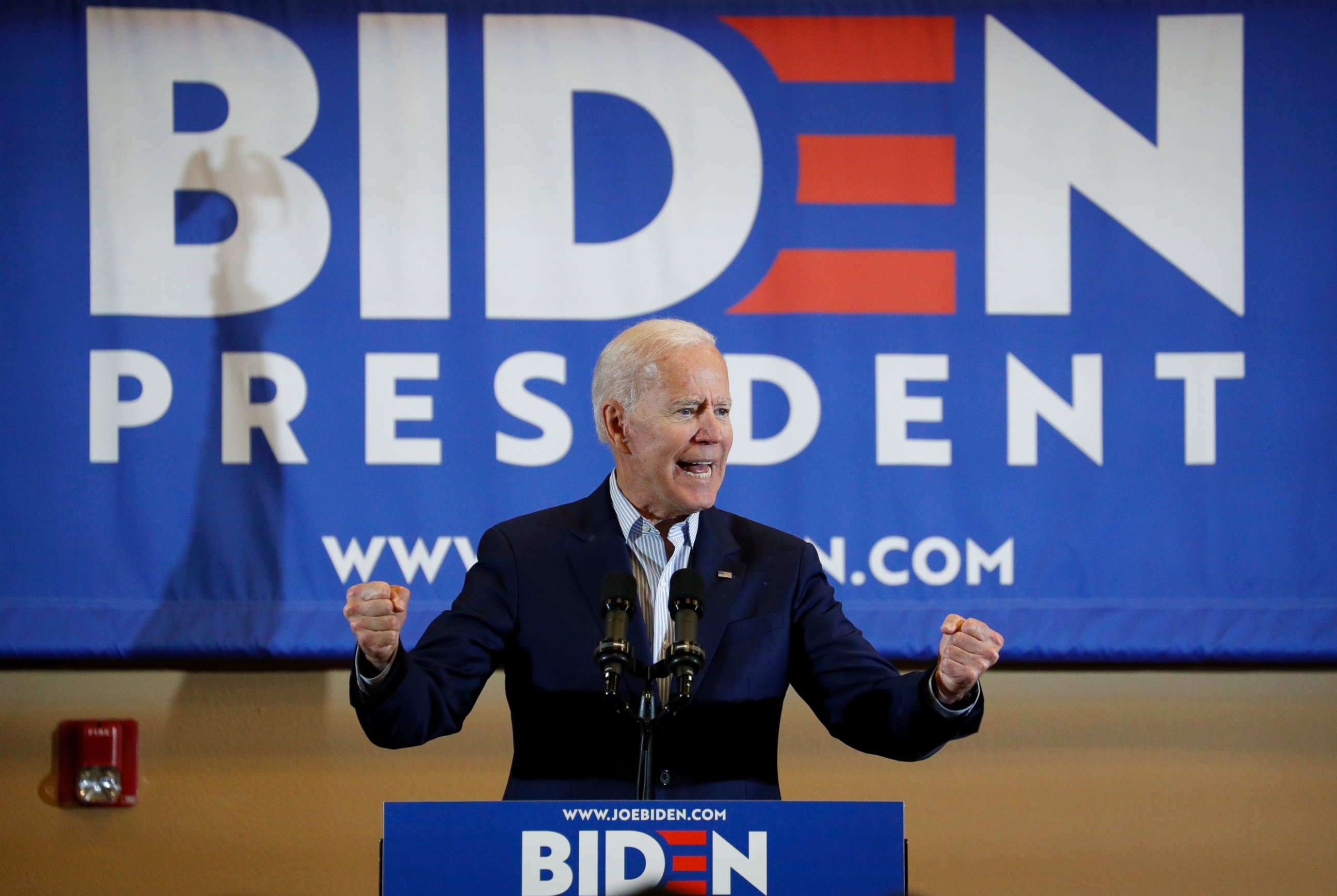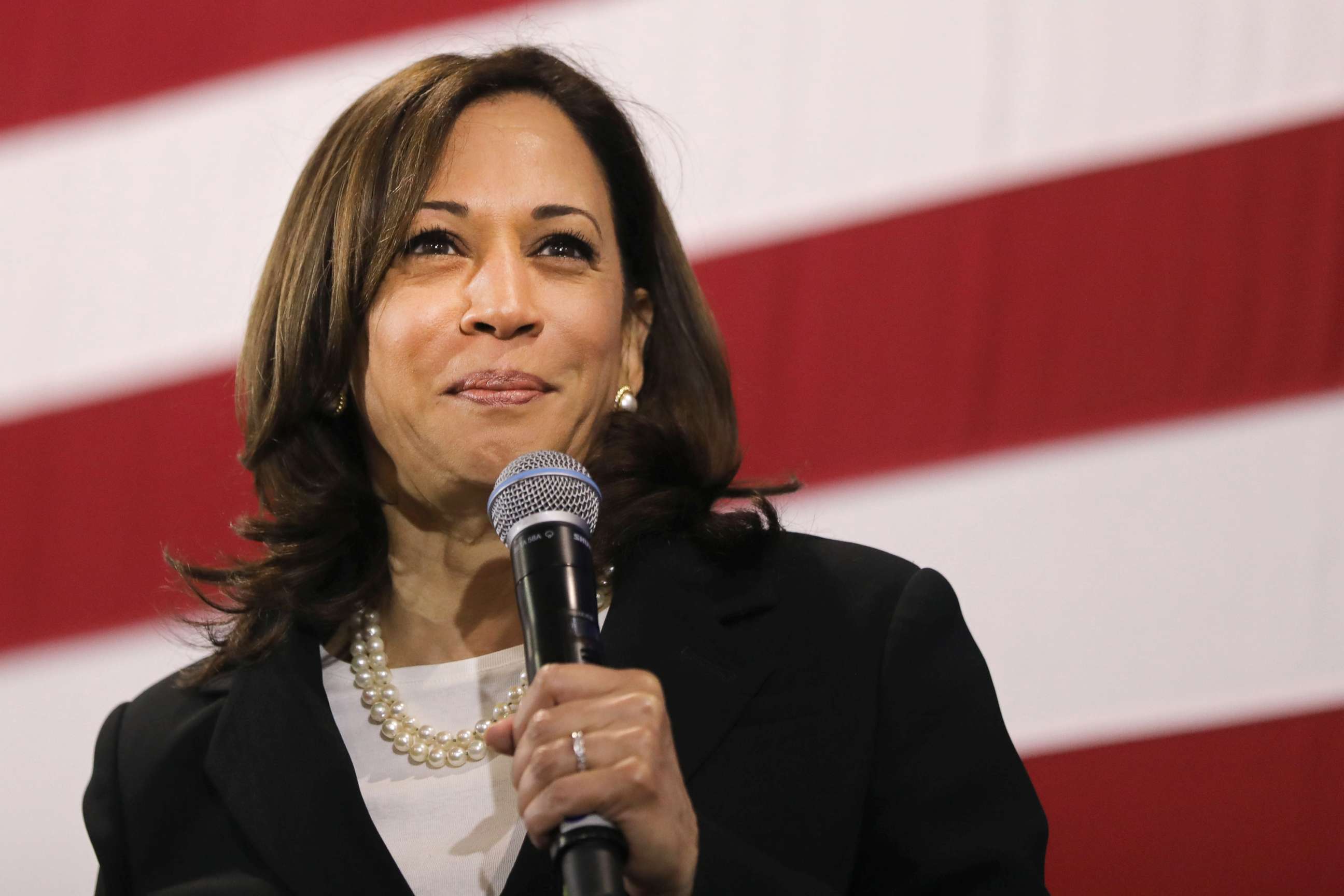Huge 2020 field will force Democrats to confront divisions early: ANALYSIS
The size and diverse nature of the field could have unintended consequences.
It’s an embarrassment of Democratic candidates – until or unless it gets embarrassing.
With announcement season just about complete, Democrats now turn to the task of choosing a presidential candidate from a field that shatters all records in terms of pure numbers and the range of backgrounds and experiences.

New York City Mayor Bill de Blasio’s candidacy swells the Democratic field to 23 – or 24, if you count an 88-year-old former Sen. Mike Gravel, whose anti-war candidacy is being run by a pair of high-school students.
The size and diverse nature of the field could have unintended consequences. An election season where Democrats view unity as vital in efforts to defeat President Donald Trump seems likely to begin with the party exposing its internal fault lines as the race for attention becomes more intense.

The party continues to grapple with questions about what labels like “progressive” and “moderate” mean, and how aggressive to be in tone in opposing the president. It’s already forcing uncomfortable conversations about race, ethnicity, and gender – and has policy implications that figure to grow only more intense over time.

Some Democrats worry that having this many people running means an automatic advantage for the biggest names in the race: former Vice President Joe Biden and Sen. Bernie Sanders, both of whom are white men well into their 70s.

“People can’t choose among 24 people – it’s just not possible,” said Chris Kofinis, a Democratic strategist who has worked on Capitol Hill and on presidential campaigns. “When you have 24 candidates, it actually helps the frontrunner.”
The early focus on perceived frontrunners also means more scrutiny on the words and records of those candidates. Just this week, Biden has fended off a criticism of his plans to combat global warming – a critique joined by Rep. Alexandria Ocasio-Cortez, an icon of the young and resurgent left.
The battle to break through could also create an incentive for attacks – both in advance of and at the early-summer presidential debates. Democrats enter an unpredictable campaign phase knowing that the early followers of nearly two dozen candidates will wind up being disappointed.
Other Democrats see an organizing advantage in a wide and varied presidential field. They point out that Republicans had similar concerns about their 17-person field in 2016, only to see Trump elected. The GOP managed to come together behind even a flawed candidate who strayed far from traditional conservative ideology.
Likewise, bruising 2018 congressional primaries only wound up adding momentum to Democrats’ midterm wave last year. Concerns about establishment-vs.-grassroots fights faded amid the appeal of opposing the Trump agenda, in plenty of time for last November.
“The upside is that it’s an indication of energy and enthusiasm to run. It’s an indication of confidence that we have a path to win,” said Jesse Ferguson, who helped run House Democratic campaign efforts in 2012 and 2014 before working for Hillary Clinton’s campaign in 2016. “The downside is it makes it harder for any one of them to get known and break through the clutter.”
The clutter is real, and will become evident very soon, with the first Democratic debates in late June. Despite new accommodations party leaders made to allow an unprecedented 20 candidates to participate in those debates over two nights, several serious candidates won’t make the cut.
The depth of talent and experience is also real. Running for president as Democrats are seven senators and two former senators; seven current or former House members; three current or former governors; three mayors; an entrepreneur and a self-help guru, neither of whom have ever held elected office.
Among the field of 23 are six women, three African-Americans, and arguably the most viable Latino, Asian, and openly gay candidates ever to run for president.
South Bend, Ind., Mayor Pete Buttigieg is 37, and Rep. Tulsi Gabbard is 38; both are military veterans who would be the youngest individuals ever elected president. Biden, meanwhile, is 76, and Sanders is 77; either would be the oldest president elected, and their careers in public life have extended further back than the entire lifespans of some of their rivals.
Those facts speak to the immense demographic and ideological shifts at play inside a party still reeling from its shocking 2016 defeat. That’s evident in the candidates’ biographies and policy prescriptions, with far-reaching plans for health care, guns, the environment, and handling big tech companies moving to mainstream conversation.
Looming on the other side of the intense primary battles is the possibility that a consensus nominee won’t be chosen by the time Democrats convene in Milwaukee for their convention next summer.
“If people think this is bad now, with this many candidates, just imagine going to the convention with six, seven, eight candidates, and none of them have a majority,” Kofinis said.
But the field is also so large that nobody realistically knows how to game-plan it. That could provide some comfort for Democrats who may have no choice but to embrace the uncertainty ahead.